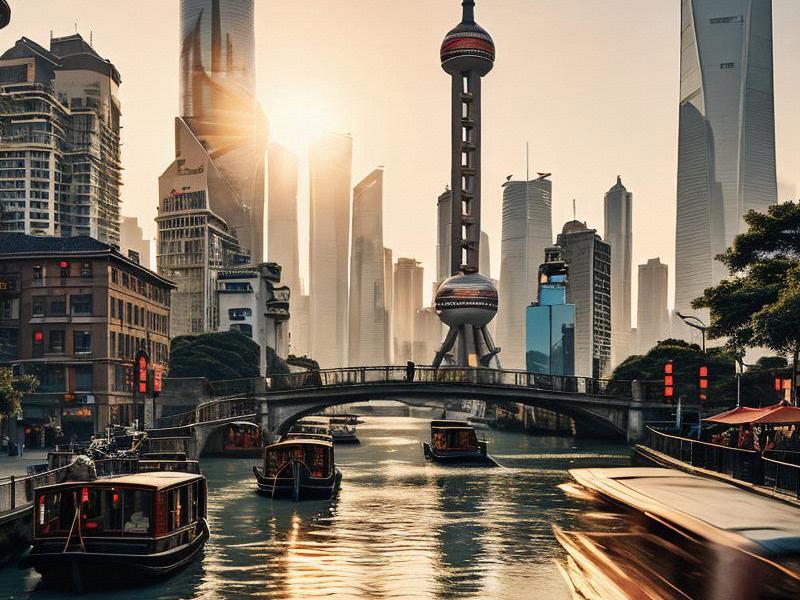Shanghai's Renaissance: A Blend of Tradition and Modernity in the Vicinity
⏱ 2025-05-02 05:53 🔖 上海龙凤419
📢0℃

Nestled on the banks of the Huangpu River, Shanghai stands as a beacon of China's economic and cultural resurgence. Over the past few decades, the city has undergone a remarkable metamorphosis, evolving from a historic port city into a global metropolis. Yet, amidst the skyscrapers and bustling streets, Shanghai has managed to preserve its rich cultural heritage, creating a harmonious blend of tradition and modernity that is truly unparalleled.
The heart of Shanghai, known as the Bund, is a testament to this duality. Once a bustling area for international trade, the Bund now boasts a stunning skyline of modern skyscrapers juxtaposed against the historic European-style buildings. These structures, built during the colonial era, stand as a reminder of Shanghai's storied past while also serving as a backdorpfor the city's rapid modernization. Visitors can stroll along the waterfront promenade, enjoying the views of the Pudong New Area across the river, where the iconic Oriental Pearl Tower and the futuristic Shanghai Tower dominate the skyline.
One of the most striking examples of Shanghai's ability to blend tradition with modernity is the transformation of the former French Concession. Once a residential area for foreigners, the French Concession has been revitalized into a vibrant cultural and commercial district. Narrow cobblestone streets lined with charming cafes, boutique shops, and art galleries now attract both locals and tourists. The area's preservation of its historic architecture, combined with the addition of contemporary amenities, creates a unique atmosphere that is both nostalgic and forward-thinking.
The city's commitment to preserving its cultural heritage is also evident in the numerous museums and historical sites scattered throughout Shanghai. The Shanghai Museum, located in People's Square, is renowned for its extensive collection of Chinese art, including ancient ceramics, calligraphy, and paintings. The museum's modern architecture, designed by the famous Chinese architect I.M. Pei, reflects the city's ability to integrate traditional art with contemporary design.
爱上海同城对对碰交友论坛 Another notable cultural institution is the Shanghai Urban Planning Exhibition Center, which showcases the city's urban development and planning efforts. Visitors can explore interactive exhibits that highlight Shanghai's transformation over the years, from its humble beginnings as a fishing village to its current status as a global financial hub. The center also provides insights into the city's future plans, emphasizing sustainability and the preservation of historical landmarks.
In addition to its cultural initiatives, Shanghai has made significant strides in urban development, particularly in the Pudong New Area. Once a rural area on the eastern side of the Huangpu River, Pudong has been transformed into a symbol of China's economic reform and opening-up. The area is home to some of the world's tallest buildings, including the Shanghai Tower, which stands at 632 meters and is the tallest building in China and the second-tallest in the world.
The Lujiazui Financial District, located in Pudong, is a hub for international finance and commerce. It is home to the Shanghai Stock Exchange, as well as numerous multinational corporations and financial institutions. The district's modern skyline, with its glass skyscrapers and futuristic design, represents Shanghai's aspirations as a global financial center.
Despite its rapid development, Shanghai has not overlooked the importance of green spaces and sustainable urban living. The city has invested heavily in creating parks and public spaces, such as Century Park and the Yu Garden, which provide residents and visitors with opportunities to relax and connect with nature. These green oases serve as a reminder of the city's commitment to balancing economic growth with environmental sustainability.
上海龙凤419贵族
Transportation in Shanghai has also undergone a revolution, with the city boasting one of the most efficient and extensive public transit systems in the world. The Shanghai Metro, one of the busiest metro systems globally, connects various parts of the city, making it easy for residents and tourists to navigate. Additionally, the city has introduced electric buses and bike-sharing programs to promote eco-friendly transportation options.
Shanghai's culinary scene is another aspect that reflects its unique blend of tradition and modernity. The city is renowned for its vibrant food culture, offering everything from classic Shanghainese dishes to international cuisine. The bustling night markets, such as the Nanxiang Steamed Bun Restaurant and the Yuyuan Bazaar, are popular destinations for both locals and tourists seeking authentic flavors.
In recent years, Shanghai has also emerged as a hub for technology and innovation. The city is home to several high-tech zones, such as Zhangjiang Hi-Tech Park, which attracts leading tech companies and startups. These developments have positioned Shanghai as a key player in China's digital transformation and global tech industry.
爱上海419论坛 The city's government has implemented various initiatives to support innovation and entrepreneurship. Programs such as the Shanghai Pilot Free-Trade Zone (FTZ) have facilitated trade and investment, while initiatives like the Shanghai International Film Festival and the Shanghai International Art Festival have fostered cultural exchange and creativity.
As Shanghai continues to grow and evolve, it remains committed to preserving its unique identity and cultural heritage. The city's ability to blend tradition with modernity serves as a model for other urban centers around the world, demonstrating that economic development and cultural preservation can coexist harmoniously.
In conclusion, Shanghai and its surrounding areas offer a fascinating glimpse into the city's rich history and dynamic present. From the historic Bund to the futuristic skyline of Pudong, Shanghai's transformation is a testament to its resilience and adaptability. As the city looks to the future, it remains dedicated to maintaining its unique character, ensuring that the legacy of its past continues to inspire and shape its present and future.
【潮涌长三角:上海的半径与圆周】从外滩灯光到江南水乡的共生密码Shanghai's Vibrant Cultural Scene: A Blend of Tradition and Modernity【霓虹与素笺】上海女性的百年气质图谱Shanghai 5250: Quantum Leisure Singularity and the Galactic Nightlife Matrix【城市观察】文化魔方的三原色:上海剧场、书店与美术馆的共生实验Shanghai's Nightlife Renaissance: Where Imperial Heritage Meets Quantum Innovation【霓虹密码】上海娱乐会所的时空折叠术Shanghai's Smart Nightlife Ecosystems: Blending Imperial Heritage with AI-Driven Innovation【量子上海】在11个维度中同时绽放的魔都镜像(1850-2025)Shanghai's Finest Women: A Story of Resilience and Excellence

